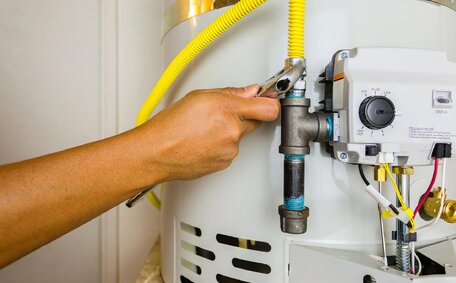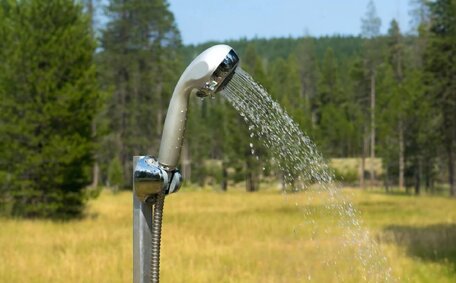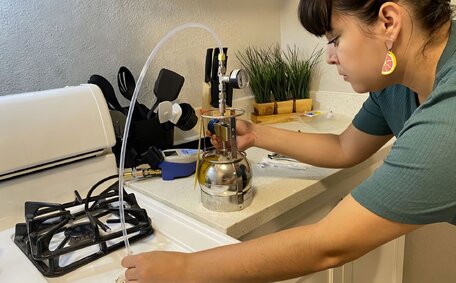Introduction to pipe relining and longevity
Pipe relining offers a non-intrusive solution to repair your sewage system, eliminating the high costs and inconvenience of excavation. Pipe relining inserts an epoxy resin liner into the existing pipe, which cures to form a new, seamless pipe within the old one, thus ensuring a leak-proof system.
Pipe relining is recognised for its potential to significantly extend the life of pipes, providing a durable solution to enhance the resilience of your plumbing system. Correctly installed epoxy liners, employed in best pipe relining practices, have been found to last 50 years or more under normal conditions. Epoxy liners, outlasting conventional pipes by offering over 50 years of durability, are This method is especially effective for materials such as cast iron, galvanised steel, clay, and concrete.
Elements such as ground movement, tree root encroachment, and corrosive soils over time can become catalysts for necessary sewer repairs when damaged pipes deteriorate, seeping or collapsing. Relining fundamentally revitalises your broken pipes, a crucial part of our comprehensive plumbing services, shielding them from future harm that might damage your property while eschewing the considerable chaos of excavation for pipe relining Sydney replacements.
This article explores the durability of relined pipes relative to other materials and methods, providing you with everything you need to know about pipe relining. Additionally, we’ll delineate the critical function of a drain camera in ensuring pipe relining work is impeccably performed and spotlight factors like pipe dimensions, positioning, and contents that might affect durability.
The pipe relining process step-by-step
Our specialised service can repair your pipes attentively, rejuvenating them with a meticulous process that sidesteps stressful excavation work. Here is the process step-by-step:
- Initial CCTV pipe inspection ascertains the crux of the issue was identified through expert navigation of a camera within your plumbing network, scrupulously scanning each section for emergent complications or obstructions.
- Pipe cleaning uses high-pressure water jetting to remove blockages and clean pipes thoroughly, followed by a tidy-up of the work area.
- Resin insertion entails carefully placing a robust epoxy resin liner into the pipe, ensuring a precise and secure fit.
- In the curing stage, hot water or steam activates the resin, solidifying it to form a durable, leak-resistant lining within the pipe.
- Final CCTV inspection. Your sewer pipe network is rigorously inspected with cutting-edge camera technology to ensure your system is certified for immaculate performance.
The resin lining securely affixes to your sewer line’s inner surface, enabling a thorough pipe repair without disruptive digging.
Impact of pipe material on relining durability
The longevity of a relined pipe depends significantly on the material of the original pipe. Here is an overview of how key pipe materials interact with epoxy resin liners:
- Cast iron - Ideal for relining. The resin bonds tightly to the rough inner surface, with relined cast iron pipes lasting 50+ years.
- Clay - Relining breathes new life into old clay pipes. Expected to last for 50 years, protected by the durability of the liner.
- PVC Pipes - Smoother in texture, PVC Pipes might have less adhesion but still yield exceptional results with relining. Proper installation of relined PVC pipes can lead to longevity, with a typical lifespan of 30-50 years.
- Concrete - Lasting repair for concrete pipes. With a smooth surface like PVC, adhesion is limited, so a lifespan of 30 years is typical.
- Steel - Prone to rust so relining adds crucial corrosion protection. Can extend lifespan by 20-30 years.
Aside from materials, the most common pipe elements like size, usage levels, and soil type also play a pivotal role in defining the sturdiness of your sewer lines. But in the right conditions, epoxy relined pipes often exceed 50 years across common pipe relining materials before maintenance is needed.
Cost factors to consider with pipe relining
Considering the costs of pipe relining, several factors must be taken into account:
- Type of pipe material - Cast iron and clay pipes tend to be the most economical to reline due to ease of resin bonding.
- Size of the pipe - Larger pipes require more resin and effort to reline, increasing costs.
- Accessibility issues - If the pipe is difficult to access, costs can rise due to equipment needs.
- Extent of damaged pipes - More extensive corrosion and cracks necessitate additional resin for relining your damaged pipes.
- Location - Urban and remote areas usually cost more for mobilisation fees.
- Water jetting - Clearing away substantial debris and build-up can also necessitate thorough water jetting at extra cost.
Considering the specifics, Many homeowners consider whether the investment in pipe relining is worthwhile. In general though, pipe relining remains over 50% cheaper than traditional pipe replacement.
Key benefits of pipe relining vs full replacement
Pipe relining is often the superior alternative to full pipe replacement, offering numerous advantages:
- Less expensive - Pipe relining costs 50-80% less than replacement.
- Minimal landscape disruption - No digging is needed at your house, saving you from the eyesore of trenches.
- Enhanced flow - The smooth epoxy resin repairs drain pipes efficiently, boosting performance similar to that achieved by professional drain cleaning.
- Longevity - Can last 50+ years just like new pipes.
- Preservation of pipe route - The original alignment of the pipe is maintained.
- Quick installation - Pipe relining usually takes just one day.
- Added corrosion protection - The liner protects against rust and future damage.
The traditional dig pipe repair method entails ground breakage, removal of old pipes, installation of new ones, and landscape restoration, making it notably disruptive and costly. Pipe relining enables the repair of deterioration and leaks without the need to dig up your landscape.
The team did excellent work, fitting the seamless epoxy pipe lining tightly to your pipes’ inner surfaces, creating a strong and resistant layer that satisfies clients. This improves drainage while restoring integrity, getting your plumbing back into excellent shape.
Ongoing pipe maintenance for longevity
To maintain the sterling standard of all our plumbing services, it is essential to commit to continuous maintenance routines. This involves:
- Scheduling inspections every two years with advanced CCTV technology is crucial for extending the longevity of your pipework. This allows any new cracks or faults, which can worsen over time, to be detected early.
- Prompt repair of leaks or other damage is crucial, as small issues can be addressed before escalating, maintaining pipe integrity.
- Managing sewer storm water overflows during intense downpours is key to preventing hydraulic pressure damage.
- Clearing sink, tub and floor drain strainers to prevent debris buildup.
- Keeping large trees and invasive roots away from pipe layouts.
- Avoiding pouring fats or harsh chemicals down drains.
- Maintaining stable soil pH around pipes to minimise corrosion.
- Ensuring junctions and connectors are watertight.
With regular care, relined pipes can achieve their full 50-year lifespan, just like any other plumbing system. But with proper maintenance, quality epoxy resin liners will preserve the life expectancy of your pipes, ensuring smooth flow for decades to come.
Addressing common concerns with relined pipes
When considering pipe relining, several questions often come to mind. We address common questions, such as 'how does pipe relining work?', along with other typical inquiries from homeowners:
How long do relined pipes really last?
A common question about pipe relining is its longevity: specifically, how long do relined pipes last? Epoxy resin liners are proven to endure over 50 years in materials such as cast iron, clay, and concrete before requiring repair. With ongoing maintenance, relined pipes can even exceed this lifespan.
Can relining prevent future blockages?
Yes, the seamless interior of a relined pipe helps prevent the accumulation of buildup and debris. By ensuring optimal pipe care, homeowners can notably diminish the risk of experiencing blocked drains over an extended stretch of time.
Do relined pipes withstand ground movement and roots?
The resin liner adheres firmly, ensuring a sturdy new pipe emerges that relining can reinforce to come out strong against substantial ground pressures that may cause cracks and leaks in older pipes. It also serves as a barrier against invasive tree roots compromising the pipe structure.
Can relining withstand hot waste water or chemical flows?
Quality resin liners are engineered to manage the high-temperature effluents from appliances including your water heater, dishwasher, or washing machine. Your water systems, especially relined pipes, withstand continuous hot water flow and typical household chemicals commonly poured down drains.
Their expertise in relining Sydney pipes and solving various relining challenges makes them highly recommendable as they offer lasting solutions tailored to your plumbing needs. Contact us to schedule your inspection and discover how to ensure the longevity of your pipe system.






